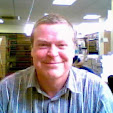SETTING, MAINTAINING AND CHANGING PACE
SETTING THE PACE
If you write horror, SF, fantasy or action thrillers, you will probably want to have your book accelerating throughout to a slam-bang breathless climax at or very near the end.
But you also need to have a great opening page to hook the reader’s attention – and the attention of the agent and publisher.
So what bits can be slow, what bits must be fast, and how do you set the pace anyway?
Before we get to the mechanics of changing pace, I’d like to give everyone a little repeat of the Aristotelian plot structure of a book (or film).
Act one – the first quarter of a book.
Act two – the middle half of the book.
Act three – the last quarter of the book.
The opening pages of a book may well show the main character, the hero, going about his or her daily life. Then something happens that forces the hero to do something out of the ordinary. That something is called the inciting incident. This should definitely come near the beginning. (Of course, you could argue that in some instances, the inciting incident might well happen before the start of the book, and this guarantees a reasonable pace, because we’re already into conflict and drama at the very beginning.)
About a quarter of the book is spent establishing all the characters and settings, equipment, introducing all the major themes. This is Act One. This is where you will have descriptions – of people and places, of the characters state of mind, feelings, interaction with others, setting up dialogue – so Act One is of necessity going to be moderately paced. Your problem is actually making sure that it’s not too slow.
A word of caution here – one thing you should always avoid is expositional writing – i.e. telling the reader things. Never, ever tell the reader anything – show them. If it is significant that the hero’s parents died two years ago, introduce the fact in some dialogue with an old friend. Much better and more natural.
You might well want to go through your descriptions weeding out redundant words. The word “that” can usually be cut out completely. “Was running” can be replaced with “ran”. Changing these words for active verbs has the effect of heightening pace.
Using your characters to drive the story will also set a natural pace. Yes, you have your plot points to meet and satisfy, but letting the characters arrive there in a natural and believable way will automatically set the correct pace.
Plot Point One is the end of Act one. It is a significant event. The hero meets the woman who is going to help him resolve the problem he has and overcome the nemesis.
Act Two, and the pace will begin to speed up. The hero may still be gathering the allies, talents or skills he will need to confront the nemesis, but there is also action. Ideally, quite a lot of action. Again to speed things up, eliminate words like “that”. Replace all passive verbs with active ones.
And here is a handy hint. Have shorter sentences. That increases pace.
Instead of your long, lingering, beautifully crafted sentences: the ones that contain multiple clauses; to increase pace, write simple sentences wherever possible.
Read the above paragraph again, and then read the paragraph below, where I say the same thing, but with much greater pace.
Abandon long sentences. Speak out against multiple clauses. Write only simple sentences.
See what I mean?
The mid-point though, about half way through Act Two, is the first major trial of strength between hero and nemesis. It should be fast. It may be inconclusive. It may be that the hero kills the nemesis’s chief lieutenant.
The hero’s low point, at the end of Act Two, Plot Point Two, about three quarters of the way through the book, can be slow. Indeed it should be slow. It is the calm before the storm. Our hero is gathering all his strength, resolved to win or die trying. You can have lengthy dialogue. You can have elaborate descriptions of his mental state.
Act Three, and now we gallop towards the inevitable climax that was prefigured in Act one and developed in Act Two. The climax comes about two thirds of the way through Act three. It should definitely be fast. Use the usual tricks again – no redundant words, active verbs, short sentences, abbreviated dialogue, little or no description. Just violent action and more violent action.
The resolution, at the end, can be as slow or as fast as you like.
As before, with the conflict section, why not post some of your writings up here and we’ll see if we can’t change the pace. It’s always better to have examples, don’t you think?
Wednesday, 1 April 2009
Subscribe to:
Post Comments (Atom)


No comments:
Post a Comment